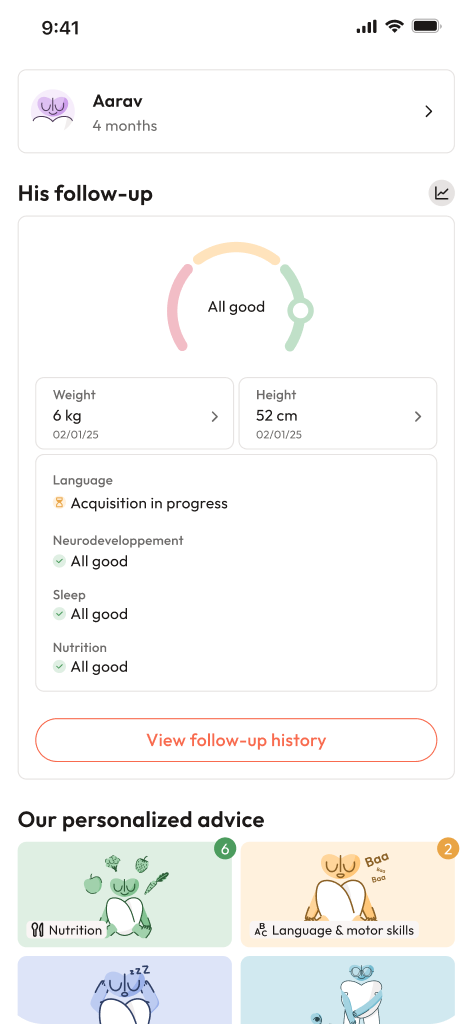Endless waves of discomfort, unpredictable jabs of throbbing pain, and sudden bursts of tension—a tapestry of sensations that can unsettle even the calmest parent-to-be. When it comes to headaches during pregnancy, uncertainty often lurks in the background: Is this fleeting or something demanding sharper attention? So many parents find their days disturbed by headaches, feeling caught between fatigue, hormonal upheaval, and the practicalities of daily life. Rest, food, light, sound—any shift can tip the balance. Yet, behind each headache is a complex dance of physiological changes, signaling a body working overtime. What triggers these headaches? Which warning signs call for prompt action? And above all, how can relief be found without compromising safety for mother or baby? Questions abound, and the search for reassuring, science-backed guidance becomes essential.
Let’s explore the facets of headaches during pregnancy: their different faces, warning bells, causes, safe relief, and day-to-day strategies—so parents can step forward, informed and confident.
Understanding Headaches During Pregnancy: Types, Patterns, and Alarming Signs
When speaking about headaches during pregnancy, it’s not just a matter of an occasional dull ache. There’s variety. The everyday, squeezing tension-type headache—that classic tightening across the forehead, perhaps reaching behind the ears or down the nape. Fatigue? Poor posture at the desk? Insomnia or hours of screen time? Any could be a trigger, sometimes in surprising combinations.
Then emerge the more daunting migraine headaches. Intense, pulsatile, mostly one-sided, often making eyes squint in bright rooms or music seem too loud. Nausea may join the party, along with vomiting or visual phenomena—flashing lights, shimmering lines, fragments of blurred colour. With pregnancy, especially the first trimester, these migraines may appear with greater frequency, occasionally subsiding as trimesters roll by, but sometimes persisting as a stubborn guest.
Less common, but nonetheless worrisome, are cluster headaches: sharp, penetrating attacks focused around one eye, with possible watery eyes or a congested nose. Thankfully, these are rare during pregnancy but worth recognizing.
But it’s not simply about type—timing and intensity matter. A headache that hits suddenly, described as the “worst ever.” Persistent pain not responding to rest or acetaminophen. Vision blurring, spots flickering before your eyes, swelling in the face or hands, ongoing fever, feeling abnormally confused, or measuring high blood pressure at home; all these should ring warning bells. These could gesture towards serious issues like preeclampsia, a condition where elevated blood pressure and protein in the urine endanger both parental and fetal wellbeing and demand immediate medical attention.
Causes of Headaches During Pregnancy
Ever wondered why the head pounds so much more during these months? The culprits are many, but hormonal changes take center stage. Rising and falling levels of oestrogen and progesterone trigger vasodilation (widening of blood vessels), altering blood flow to the brain in new ways. Increased overall blood volume, necessary for nourishing the growing baby, shifts pressure patterns and sometimes stirs up headaches during pregnancy.
Not all causes are embedded in biology; everyday factors are just as powerful.
- Dehydration: Even mild lack of water, especially when morning sickness is robbing fluids, is a potent trigger.
- Low blood sugar: Skipping meals or delays between eating—those “hunger crashes”—often translate to pounding headaches.
- Caffeine withdrawal: Reducing your daily cup suddenly? The rebound may bring its own ache.
- Physical tension: As the body adapts to a changing centre of gravity, muscle strain in neck, shoulders, and upper back can set off headaches.
- Environmental stimuli: Bright lighting, strong odours, relentless noise—each can reach a tipping point.
- Stress and sleep disturbances: Fighting with insomnia, fending off anxiety, these factors tighten blood vessels and amplify discomfort.
After week 20, the link between headaches, swelling, and raised blood pressure draws extra attention due to the risk of preeclampsia.
Headaches by Trimester: Shifting Patterns Across Pregnancy
Different stages bring shifting patterns:
- First trimester: The combination of hormonal surges, rising blood volume, extra sensitivity to smell, longer hours of fatigue, and perhaps the decision to stop caffeine all collide. Headaches, often of the tension or sinusy sort, are most common now.
- Second trimester: A plateau emerges. With hormone levels becoming steadier, many find the intensity and frequency of headaches ease a notch. But for some, stress or posture-induced discomfort remains ever-present, sometimes even persist.
- Third trimester: Here, physical strain peaks. Weight grows, sleep quality dips, and the body readies for delivery. The stakes are higher—high blood pressure may develop, and persistent headaches, especially with vision issues or swelling, need swift evaluation.
Recognising Symptoms And Knowing When Help Is Needed
Mild, diffuse headaches, responding well to water, rest, and acetaminophen, may pass without much fuss. But what deserves immediate attention?
- A headache that is sudden and intensely severe.
- Any visual disturbance—blurring, flashing lights, inability to focus.
- Nonstop vomiting.
- Swollen face or hands.
- Persistent fever unresponsive to regular care.
- Confusion, drowsiness, or feeling “off” mentally.
- Unexplained high blood pressure.
- Throbbing headache combined with sharp pain in the upper abdomen.
In each scenario, a call or visit to your healthcare team should not be delayed, as early intervention can protect both parent and unborn child.
Impact Of Headaches: Parent And Baby Risks
Most headaches during pregnancy, whether tension or migraine-driven, are merely uncomfortable—transient and without lasting harm. Yet, scenarios involving repeated or extremely severe headaches, especially when entwined with high blood pressure or changes in mental status, can indicate more dangerous conditions like preeclampsia, stroke, or placental issues.
Such complications not only threaten the parent, but, by altering blood flow through the placenta, may slow baby’s growth, trigger early delivery, or, in rare situations, endanger survival itself. The frequency of these complications is low, but awareness and early recognition remain vital.
Safe Diagnosis Of Headaches During Pregnancy
Accurate diagnosis starts with attentive listening—when the headache strikes, how it feels, what relieves it, family background for migraine. Your doctor may check blood pressure, urine (looking for protein), and conduct a basic neurological check-up. Sometimes, an eye exam (fundoscopy) helps spot possible early warnings of increased intracranial pressure or evolving preeclampsia.
If imaging is necessary, MRI scans are preferred over CT to avoid radiation. Parents can empower their care by keeping a headache diary: log timings, severity, triggers, foods, and responses to each treatment to discern patterns over time.
Safe And Effective Headache Relief During Pregnancy
First line of defense? Always non-medical measures:
- Slip away to a cool, quiet, dim space—sometimes just minutes away from hustle brings huge relief.
- Place a cold compress on the forehead or a warm pack behind the neck—alternating temperatures soothes muscles.
- Gentle head, temple, or neck massage eases muscle strain from awkward posture.
- Hydration is paramount; 1.5 to 2 liters daily, even sipping in small intervals if drinking feels difficult.
- Balanced meals, snacked throughout the day, shield against low blood sugar dips.
- Stick to regular sleep and wake times; a settled schedule pays off in the long run.
- Light exercise—brisk walking, swimming, or even prenatal yoga—prevents tension buildup.
- Practice relaxation: deep breathing, guided meditation, or simple mindfulness.
Natural options, tested with care:
- Herbal teas such as lemon balm or using chamomile hydrosol on the forehead can provide mild comfort—but always check with your doctor before starting such remedies.
- Skilled acupuncture can reduce headache frequency in certain profiles.
Word of caution: steer clear of all essential oils, even for inhalation or topical use, as they are not considered safe in pregnancy.
Medication Use: What Can Be Taken?
For short-term relief, only acetaminophen (paracetamol) carries robust reassurance during pregnancy, provided you keep within the maximum 4g/day, split into several doses. Every other painkiller—especially nonsteroidal anti-inflammatory drugs (NSAIDs) such as ibuprofen after the second trimester—must be avoided owing to possible impacts on the baby’s heart and kidneys.
Prescription treatments for disabling migraines or unusual headache patterns should only ever be started under medical supervision, keeping both baby’s and parent’s safety foremost.
No supplement, home remedy, or medicine is truly harmless unless cleared by your medical team. When in doubt, discuss every new medication thoroughly.
How To Prevent Headaches: Everyday Strategies
Building routines and self-care habits stands as the most protective attitude. Consider:
- Eat small, thoughtful meals frequently; avoid long gaps and highly processed snacks.
- Hydration must remain a focus, especially during hot weather or illness.
- If you drink coffee, stick to less than 200 mg caffeine daily and attempt gradual reduction if stopping.
- Prioritise restful, regular sleep; chaos brings vulnerability to headaches.
- Keep a keen eye out for personal headache triggers—foods, lights, scents, stressors unique to you.
- Movement matters: daily gentle exercise can dispel accumulated tension.
- Practise slow breathing, meditation, or other forms of relaxation to buffer stress.
- Postural adjustments—cushions, ergonomic chairs, and position changes—can pay big dividends for comfort.
- Recording each headache—timing, triggers, relief measures—in a smartphone or paper diary can transform future medical visits, making care truly tailored.
When To Contact A Healthcare Professional
Certain situations always call for swift guidance from your healthcare team:
- Severe, sudden, or new kind of headache.
- Blurred vision, seeing flashing lights.
- Ongoing vomiting.
- Notable facial or hand swelling.
- Persistent fever without clear cause.
- Known or newly high blood pressure.
- Pain in the upper right abdomen.
- Confusion or any unusual neurological symptoms.
A quick consultation, often starting with blood pressure and urine testing, ensures early detection of complications—making reassurance more likely and complications less daunting.
Safe Relief After Delivery: Postpartum Headaches
The journey doesn’t stop at birth. Headaches after delivery remain frequent—a product of sleep deprivation, hormonal dips (especially falling oestrogen), and dehydration, particularly for breastfeeding mothers. Tiredness, disrupted sleep, and hormones combine, often unexpectedly.
- Spinal headaches can develop post-epidural or spinal anesthesia—these intensify when standing upright.
- Postpartum preeclampsia might emerge days, even weeks, after delivery, demanding immediate assessment.
For most mild to moderate postpartum headaches, simple measures—rest, fluids, acetaminophen, and, cautiously, ibuprofen (especially during breastfeeding)—provide relief. But severe or sudden onset, visual symptoms or neck stiffness, or any link with previous preeclampsia commands urgent medical review.
Key Takeaways
- Headaches during pregnancy visit most parents-to-be at some point; the vast majority are benign but some can signal issues needing attention.
- An everyday routine built around hydration, steady meals, restful nights, and mindful activity stands as your best protection.
- Recognising what is “usual” versus what is “unexpected” helps catch underlying conditions early.
- Acetaminophen is the reliable choice for simple headache relief—others require doctor’s guidance.
- A headache diary turns scattered symptoms into meaningful patterns, supporting personalised care.
- Extensive resources and healthcare professionals are available to support you along every step. For custom recommendations and free health tools, the Heloa app offers a thoughtful companion for your journey.
Questions Parents Ask
Can pregnancy headaches affect my daily activities or work?
Absolutely. Headaches during pregnancy sometimes make it really tough to concentrate or power through the day—whether at home or at work. You may notice fatigue, lowered focus, or extra sensitivity to loud noises or bright lights, all of which can disrupt routines. Allow yourself short breaks, a few minutes of quiet, deep breathing, even gentle stretching. If it feels like headaches are taking centre stage or stealing away the enjoyment of everyday life, talk to your healthcare provider about extra support. Putting your well-being first is not just okay—it’s important for both you and your baby.
Are sinus headaches common in early pregnancy?
Yes, sinus headaches are pretty common in the first trimester. Rising hormone levels lead to nasal congestion, making you feel pressure around your forehead or cheeks. Using a room humidifier, sipping more water, and rinsing your nose with saline solution may offer some relief. Should the discomfort linger or come with a fever, speak to your healthcare professional for advice on the safest steps to take.
How can I manage work stress if I’m prone to headaches during pregnancy?
Managing work stress while also dealing with headaches during pregnancy is certainly a challenge. Try weaving in breathing breaks or short stretches between tasks—just a few minutes here and there can dial down tension. Stick to regular meal and water schedules, and don’t hesitate to communicate with your employer about small adjustments. Above all, remember: prioritising health is an act of care for both yourself and your growing baby.









